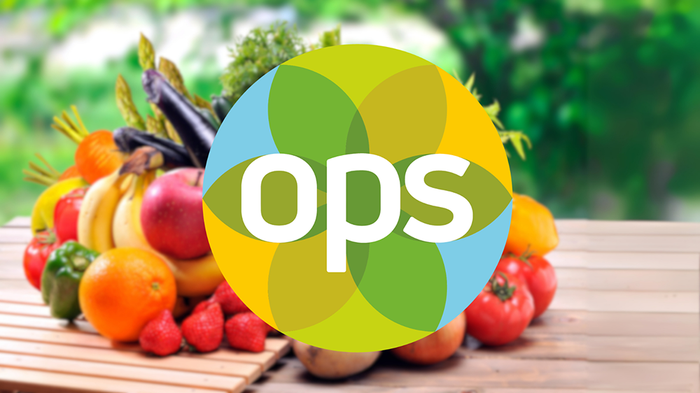Agrology Offers Growers Real-Time Carbon Monitoring
January 25, 2024

Agrology, a public benefit corporation, aims to protect the economic viability of farmers in a time of intensifying climate change.
Thanks to its predictive agriculture technology, growers are able to allocate scarce resources when extreme weather is headed their way, with in-field data and predictions that are all presented in one easy-to-use system.

Charlie Dubbe, Head of Regenerative Partnerships, Agrology
Charlie Dubbe, head of regenerative partnerships for the company, noted the Agrology platform helps farmers quantify and manage their carbon footprint, be more sustainable, and stay ahead of challenges such as drought, smoke taint, pests, and disease.
Agrology is also in the midst of developing next-level capabilities around sustainability and carbon.
The company was formed in 2019 thanks to an SBIR grant from the National Science Foundation (NSF) and originally was focused on helping growers “beat” climate change by having insights into when extreme weather would be coming their way.
“[The platform's] similar to a weather station, but it also has machine learning and AI incorporated into it,” Dubbe said. “It learns the difference between a regional forecast and what’s actually happening in the field and provides very accurate predictions block by block.”

After its success, a number of growers—including Eric Morgan at Braga Fresh Family Farms—went to Agrology to see if it could help with keeping an eye on carbon stocks in the soil.
“They wanted a real-time carbon monitor and to be able to see how the practice changes impact soil health when experimenting with regenerative,” Dubbe said.
“[The platform's] similar to a weather station, but it also has machine learning and AI incorporated into it. It learns the difference between a regional forecast and what’s actually happening in the field and provides very accurate predictions block by block.” - Charlie Dubbe
This led to the company developing the Arbiter, a monitoring system that continuously monitors and quantifies soil carbon flux. The way it works is carbon flux data is delivered to mobile or desktop devices, and growers receive critical alerts on anomalies. The system also issues weekly, monthly, quarterly, and annual carbon reports, enabling growers to easily report on and quantify carbon emissions.
After installing the Arbiter system, Braga Fresh could track its in-field carbon footprint and soil health, as well as drive farm management decisions and quantify the environmental impact of their regenerative farming practices.
“What we’re doing is monitoring carbon flux, in and out of the soil,” Dubbe said, explaining it’s not a sensor that goes in the soil but instead monitors gas concentrations. “What’s cool about that is it gives us the ability to monitor the overall health of the soil system.”
Like the gut microbiome in humans, the soil microbiome is often overlooked yet is core to the overall health and functioning of the soil system.

“Whether it’s a biological inoculant, or doing cover crops, which is going to increase the plant exudates, or manure and compost, all of these things are basically feeding the soil microbiome,” Dubbe said. “They are feeding different types of foods to this soil food web. The more activity you are getting in the soil microbiome, the more the carbon cycle is turning.”
The more the carbon cycle turns, the more growers will see carbon respiration, where the microbes are eating organic matter and respiring out CO2, and the system monitors the concentration of that at the soil surface as well as in the canopy of the crop.
“We actually want to see increased soil respiration,” Dubbe said. “We want to see more CO2 coming out because that’s indicative of the carbon cycle turning more, which indicates we are getting more carbon sequestration.”
"The more activity you are getting in the soil microbiome, the more the carbon cycle is turning.” - Charlie Dubbe
Agrology can then give those sequestration numbers to growers, which is important for ESG goals and becoming carbon neutral.
“Beyond that, something that is important to highlight is that carbon sequestration is just the secondary effect of having a healthy soil system,” Dubbe said. “There are also other positive effects of having a healthy soil system, including an improved soil structure so you’re getting better aggregate, which means you are getting better water infiltration and water retention, and Agrology gathers all that information.”
There is also an increase in nutrient cycling, so growers can spend less on fertilizer; and increased pest disease and stress resistance, which helps to lower input costs and create a healthier ecosystem by reducing the need for pesticides and fungicides.

Working with Braga Fresh, Agrology won the IFPA Circle of Excellence Award in the science and technology category for the system.
“Our real proposition for growers is we offer the only continuous, real-time carbon monitoring system that’s actually been designed for farmers,” Dubbe said. “We’ve taken scientific instrumentation that academics have used for a very long time, and we’ve made it affordable for farmers and rugged enough to survive on the farm.”
And it’s all done with a subscription service, so growers don’t need to lay out an up-front capital cost. Plus, if the system is damaged in some way, it’s covered.
“Our real proposition for growers is we offer the only continuous, real-time carbon monitoring system that’s actually been designed for farmers." - Charlie Dubbe
“Agrology is really excited about providing growers with the actual ground-truth data from their fields, so they can make better decisions,” Dubbe said.
The company has worked mostly in the wine and produce space but is looking forward to helping out more produce growers in the years ahead.
“We are looking to work with growers who are excited to take their sustainability goals to a place where they can quantify what the impact is,” Dubbe said. “We want to help growers as they transition towards regenerative and guide the process with continuous ground-truth data. We see that as our biggest opportunity.”

